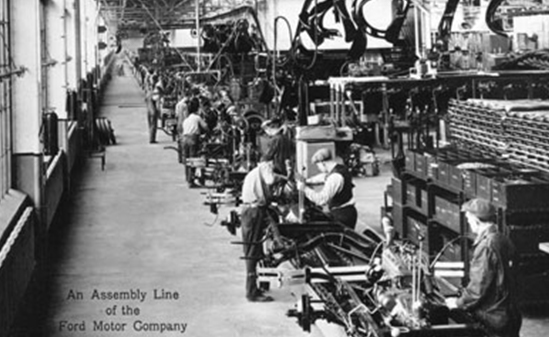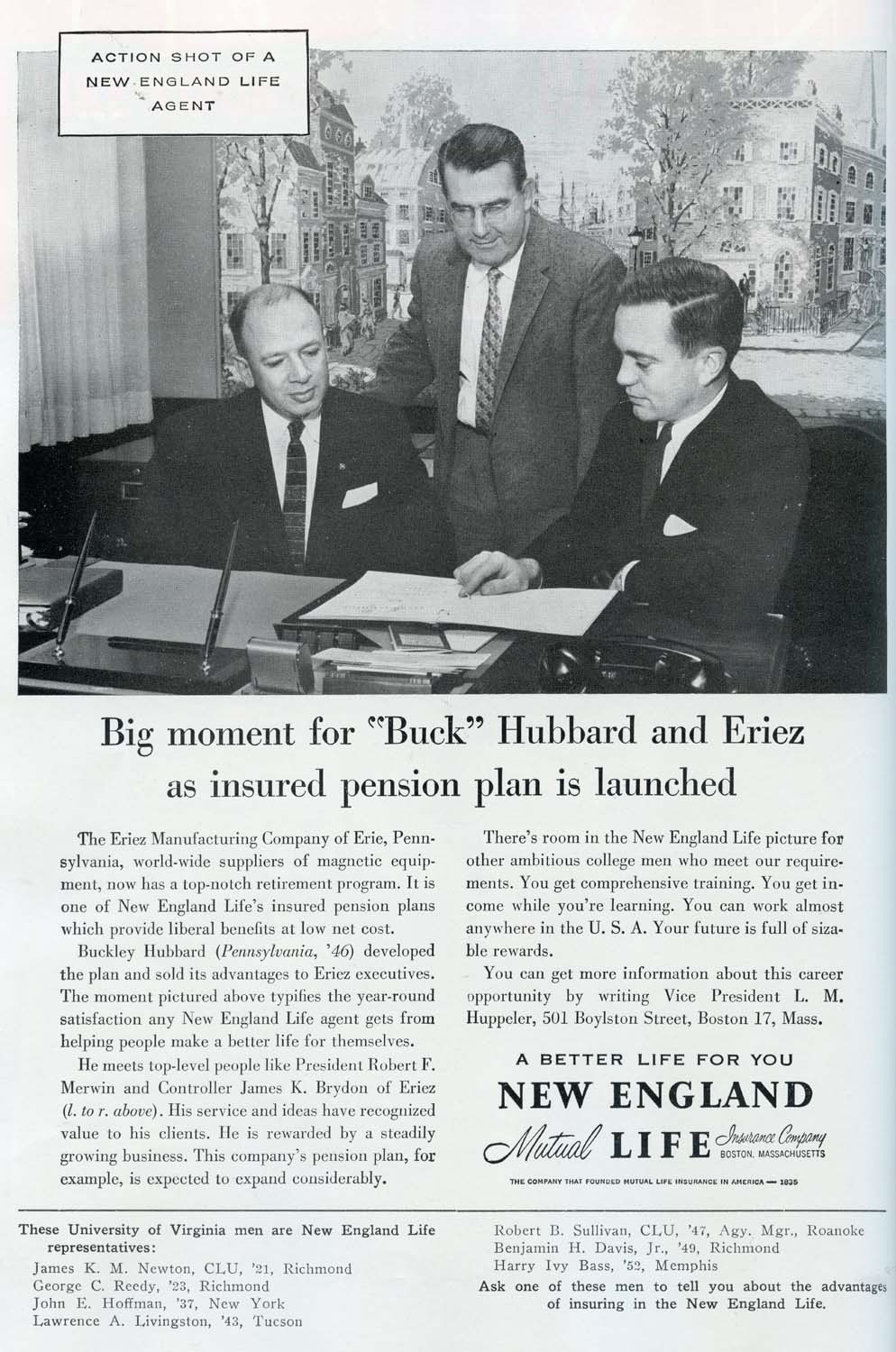
Ancient Roots and Industrial Awakening: The Deeper History of Benefits
The story of employee benefits is far older than most people realize. Even ancient Roman soldiers received pensions as a form of compensation, proof that the idea of caring for workers beyond their active service is truly timeless. The real foundations of modern employee benefits, however, began taking shape during the Industrial Revolution of the 19th century. As factories grew larger and the need for skilled workers intensified, employers started offering perks like company housing and company stores, not out of pure generosity, but as practical tools to attract and keep talent. This early "duty of care" mentality got a major boost when German Chancellor Otto von Bismarck introduced formal health insurance for workers in the late 1800s, creating one of the first structured benefit systems. By 1911, even Britain was catching on: the National Insurance Act created a national system to protect workers against income loss from sickness or unemployment, showing that benefits were becoming not just corporate strategy, but social policy. These early experiments set the stage for everything that followed, but it was a particular moment in post-WWII America that truly revolutionized how we think about employee perks.
A Lesson from History: The Post-War Revolution
It’s the late 1940s in post-WWII America. Factories are booming, returning soldiers are looking for good jobs, and employers are scrambling for the best talent. With wages capped by wartime regulations, one company makes a bold move: it offers something extra beyond a paycheck. Instead of just a salary, new hires get medical coverage and a promise of a pension – a radical idea at the time. This creative tactic to attract and retain workers was one of the surprising origin points of corporate benefits, setting the stage for how employee perks would evolve in the coming decades. The origin of corporate benefits lies in moments like this, when businesses realized that taking care of employees was not just kind, but also smart for business. From these early experiments, the history of employee perks began, showing that benefits were powerful tools for winning employee loyalty.
Long before modern HR departments, forward-thinking leaders were already tinkering with ways to keep workers happy. In 1926, automaker Henry Ford made headlines by cutting the standard workweek on his assembly lines from six days to five, establishing the five-day, 40-hour workweek. At a time when 60-hour weeks were common, Ford’s move was revolutionary. Why did he do it? Partly to curb burnout, but also as a savvy recruitment tool. By offering a better work-life balance (in an era when that term didn’t even exist), Ford hoped to attract and retain skilled workers in a competitive industry. It worked – morale improved and productivity increased, and soon other companies followed suit, cementing the 40-hour workweek as an American norm.
Ford wasn’t alone. The early 1900s saw the rise of “welfare capitalism,” where companies offered novel perks to foster employee loyalty. Industrial giants began providing things like company housing, subsidized cafeterias, sports teams, and even early retirement plans. For example, the American Express Company established the first private corporate pension plan in the U.S. way back in 1875. This employee benefits timeline milestone – a pension for long-tenured workers – was essentially a carrot to reward loyalty and encourage folks to stay until retirement. Other large employers soon introduced their own pensions and perks, learning that a secure future could keep employees dedicated. In those days, an “employee benefits package” might include free meals or a holiday party, but the underlying idea was the same as today: invest in workers for better retention.
Light-hearted as some perks were (one steel mogul, Andrew Carnegie, infamously gave his workers only one day off per year – Independence Day!), the trend was clear. Employers were inching toward a new social contract: give workers a bit more beyond wages, and you’ll earn their loyalty (and maybe even keep unions at bay). In short, the origin of corporate benefits wasn’t born from pure generosity – it was a practical solution to win hearts in an evolving labor market.

Fast-forward to the 1940s, and the stage is set for an explosion in employee benefits. During World War II, strict wage controls meant companies couldn’t lure talent with higher pay. So, they got creative: they started offering fringe benefits – extras like health insurance, pensions, and paid time off – as a way to stand out. Suddenly, what was once a rare perk became a powerful competitive tool. A company that could promise “we’ll cover your doctor’s bills” or “you’ll have a retirement income” had a clear edge in attracting war-weary workers. Government policy boosted this trend, too. By the mid-1940s, employers’ contributions to health insurance were made tax-free, essentially encouraging companies to swap dollars in wages for dollars in benefits. It was a win-win: employees got valuable support, and employers got a loyal workforce without breaking salary limits.
Mid-century magazine ad promoting a new company-sponsored pension plan (1950s). After WWII, such retirement benefits became popular tools for attracting and rewarding loyal employees.

The late 1940s and 1950s truly cemented the evolution of workplace benefits. Job security and long-term loyalty became part of the corporate culture. Many employers proudly offered defined-benefit pensions that, combined with the new Social Security system (launched in 1935), promised workers a secure retirement income. Health insurance went from novelty to norm: by the 1950s, a majority of large employers were providing medical coverage to employees. Unions had a big hand in this evolution as well. With collective bargaining in full swing, unions negotiated not just for better pay, but for better benefits – from paid holidays to robust healthcare plans. As a result, a post-war job with a big company often came to mean “a career for life” with a reliable paycheck and health, retirement, and other benefits guaranteed.
This era also saw the birth of perks we take for granted now. Paid vacation time, for instance, became more common (even if the U.S. never mandated it by law). By the 1960s, the stereotype of the corporate man emerged – someone who joined a firm, stayed for decades, and retired with a gold watch and a healthy pension. In short, after WWII the employee benefits timeline hit fast-forward: what began as ad-hoc perks had evolved into an expectation. A good job wasn’t just about the salary anymore; it was about the whole package.
As the decades rolled on, HR innovation history continued to be written. By the 1970s and 1980s, companies started thinking beyond the basics of health and retirement. Work culture was changing, and benefits changed along with it. One big inflection point was the rise of wellness programs. Forward-looking firms realized that a healthy employee could be a happier and more productive employee. Johnson & Johnson, for example, kicked off a famous corporate wellness initiative called “Live for Life” in 1979 – considered one of the first modern wellness programs. They offered employees help with nutrition, exercise, and stress management, long before office yoga and free Fitbits were trendy. The idea caught on: by the 1990s, it wasn’t unusual for large employers to have on-site gyms or to sponsor weight-loss and smoking-cessation classes. This was the evolution of workplace benefits stepping into new territory – not just protecting workers from illness, but actively promoting healthier lifestyles.
Another major shift was the push for flexible work arrangements. Believe it or not, even the concept of flexible hours has been around for decades. As early as the late 1960s, some companies (starting in Germany, then spreading to the U.S.) experimented with “flextime,” letting employees adjust their start and end times. It was a small revolution in a world previously ruled by the punch-clock. By the late 20th century, flexibility grew to include options like telecommuting – aided by new technology like personal computers and the internet. Employers found that offering a bit of flexibility in when and where work got done was another perk that employees cherished (especially working parents or those with long commutes). What started with Henry Ford’s fixed 40-hour week had now morphed into flexible work schedules in many offices – a testament to how far the employee benefits timeline had come. Today, of course, flexible and remote work has exploded in popularity (accelerated by the 2020s pandemic era), showing that the quest for work-life balance remains central to benefit strategies.
Mental health support in the workplace also has an interesting history. In the mid-20th century, companies began to quietly address issues like alcoholism among employees – often through what became known as Employee Assistance Programs (EAPs). By the 1950s, some employers had confidential counseling services to help workers with substance abuse or personal problems. It was an early acknowledgment that employees are humans with real-life struggles, not just cogs in a machine. Fast forward to today, and mental health has moved from the shadows to the spotlight. Modern benefit packages frequently include coverage for therapy, mental health days off, meditation apps, and more. Employers have learned that supporting mental well-being isn’t just compassionate – it reduces burnout and improves performance. The trajectory from a 1940s-era “alcoholism program” to a 2020s de-stigmatized mental health benefit is quite remarkable. It reflects a broader cultural change: we now recognize that a healthy workplace is one that cares for both body and mind.

The story so far, from the first pension plans to high-tech wellness apps, shows that employee benefits constantly adapt to the times. Perks that once seemed “surprising” (a two-day weekend, anyone?) eventually became standard. So, it's only natural to wonder: what benefits will define the next chapter of work? Employers today are already exploring new frontiers that would have sounded like pure luxury not long ago. One emerging trend is benefits tailored to employees’ personal lives and passions. For instance, some companies now offer pet insurance as a perk, recognizing that “pets are family” for many workers. Covering Fido’s vet bills might have raised eyebrows in the past, but it reflects how modern organizations strive to align benefits with employees lifestyles and values. Likewise, we’re seeing student loan repayment assistance, extended parental leave (for moms and dads), even “paw-ternity” leave for new pet parents in a few creative firms. These innovative perks may be today’s differentiators in recruiting, much like health insurance was in the 1940s.
Light humor aside, imagine telling a 1950s HR manager that in 2025, companies would be offering free gourmet lunches, on-site nap pods, or pay to freeze your eggs – they’d think you were writing science fiction! Yet, each new benefit addresses real needs of the workforce. The future might bring a la carte benefit menus, where employees pick and choose the mix of perks that suit their life (be it elder care support, sabbaticals for travel, or yes, pet health coverage). In an age where work culture is inseparable from life culture, benefits that once were considered extravagant or quirky can quickly become expected.
So, as we stand here today, the only thing certain about the future of perks is that it will keep evolving. The next big workplace benefit might be something we haven’t even imagined yet, but it will likely follow the same pattern as those before it. Companies will experiment, employees will respond, and the most effective ideas will spread.
What benefits will define the next chapter of work?
Will it be more holistic wellness programs, unlimited time off, or perks we consider wild today (four-day workweek, anyone)? Only time will tell. But one thing is clear: the drive to attract and retain great people will continue to shape work culture in surprising ways. Just as history has shown, from Henry Ford’s day to today’s pet-friendly offices, meeting employees’ needs isn’t just altruism, it’s smart business. And that lesson is one employee benefits will carry into whatever comes next.
![[background image] of office space (for a animal welfare nonprofit)](https://cdn.prod.website-files.com/image-generation-assets/1bdbe640-0672-4f2c-85be-84a88740773b.avif)